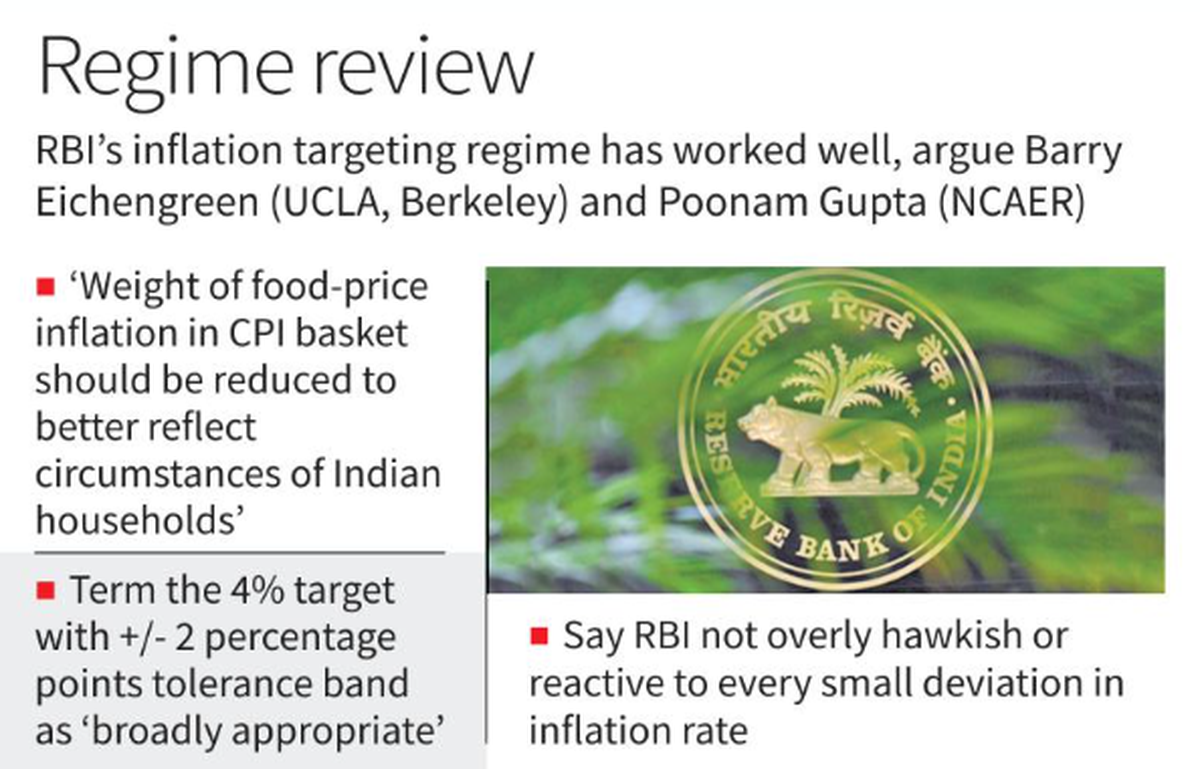The Accumulation Locker of Republic of India seal on a gate out of doors the RBI headquarters in Mumbai. Document
| Picture Credit score: Reuters
The Accumulation Locker of Republic of India’s (RBI’s) inflation concentrating on regime has labored smartly and needn’t be isolated to be preferred of a extra discretionary regime which may be dangerous and counterproductive, a fresh analysis paper has stated.
The paper titled ‘Inflation Concentrated on In Republic of India: A Additional Evaluate’ stated the burden of food-price inflation within the CPI inflation basket will have to be lowered to raised mirror the cases of Indian families.
“The RBI’s inflation targeting regime has worked well. Given this record, radical changes such as broadening its mandate or abandoning the target in favour of a more discretionary regime would be risky and counterproductive,” it stated.
The paper is authored by way of economists Barry Eichengreen (College of California, Berkeley) and Poonam Gupta (NCAER).
Against this, the paper famous that the 4% level goal, +/-2 share level tolerance band and concentrate on headline inflation stay extensively suitable.

“That said, the regime can be tweaked to improve performance,” it instructed.
The federal government and the RBI signed an inflation-targeting guarantee in February 2015 and amended the RBI Occupation in Might 2016.
The inflation goal was once i’m ready by way of the federal government in session with the RBI with the potential for revisiting it next 5 years.
Accordingly, the federal government introduced, by means of the Legitimate Gazette, 4% Client Worth Index (CPI) inflation as the objective from August 5, 2016, with an higher tolerance prohibit of 6% and a decrease prohibit of two%.
For probably the most phase, the paper identified that goals i’m ready beneath the inflation-targeting guarantee had been met; and on nearly all counts, it has carried out as envisaged.
“It has been only once that inflation exceeded the upper tolerance band of 6% for three consecutive quarters (during January 2022-September 2022),” the paper stated.
In step with the paper, proof issues to advanced results throughout inflation concentrating on.
“Inflation is lower and less volatile; inflation expectations are better anchored, and the transmission of monetary policy is more effective,” it stated.
Lately, Important Financial Guide V. Anantha Nageswaran had pitched for except meals inflation from the rate-setting shouts, pronouncing that the financial coverage has disagree bearing at the costs of meals pieces, which can be dictated by way of supply-side pressures.
In any case, opposite to previous scepticism, the paper argued that it does now not seem that the inflation-targeting guarantee has made the RBI overly hawkish or reactive to each petite rerouting within the inflation fee from its goal of four% or to each spike in meals inflation.
Since September 2016, the RBI has modified the important thing coverage fee 17 instances, the vast majority of them throughout two stormy years — in 2019-20 when the coverage fee was once eased 5 instances by way of a cumulative 185 foundation issues based on a genius expansion slowdown; and in 2022-23 when the coverage fee was once higher six instances by way of a cumulative 210 foundation issues based on sped up inflation emanating from international injuries.
Right through the residue six years, the coverage fee was once modified handiest six instances, about as soon as each month. In comparison to this, the RBI modified its coverage fee 24 instances within the 8 years previous to IT.


